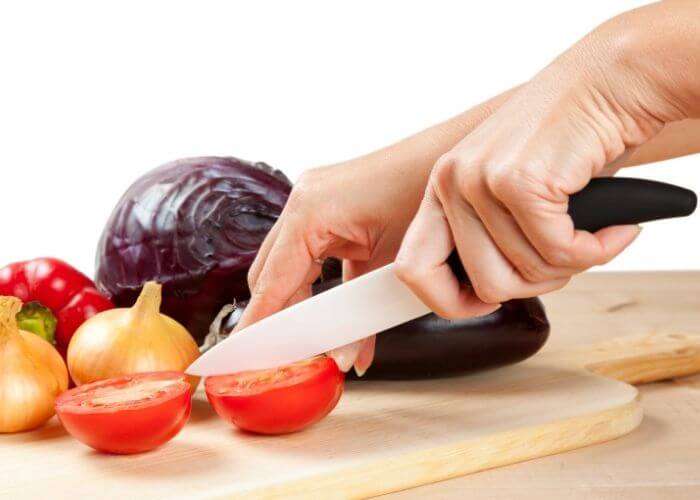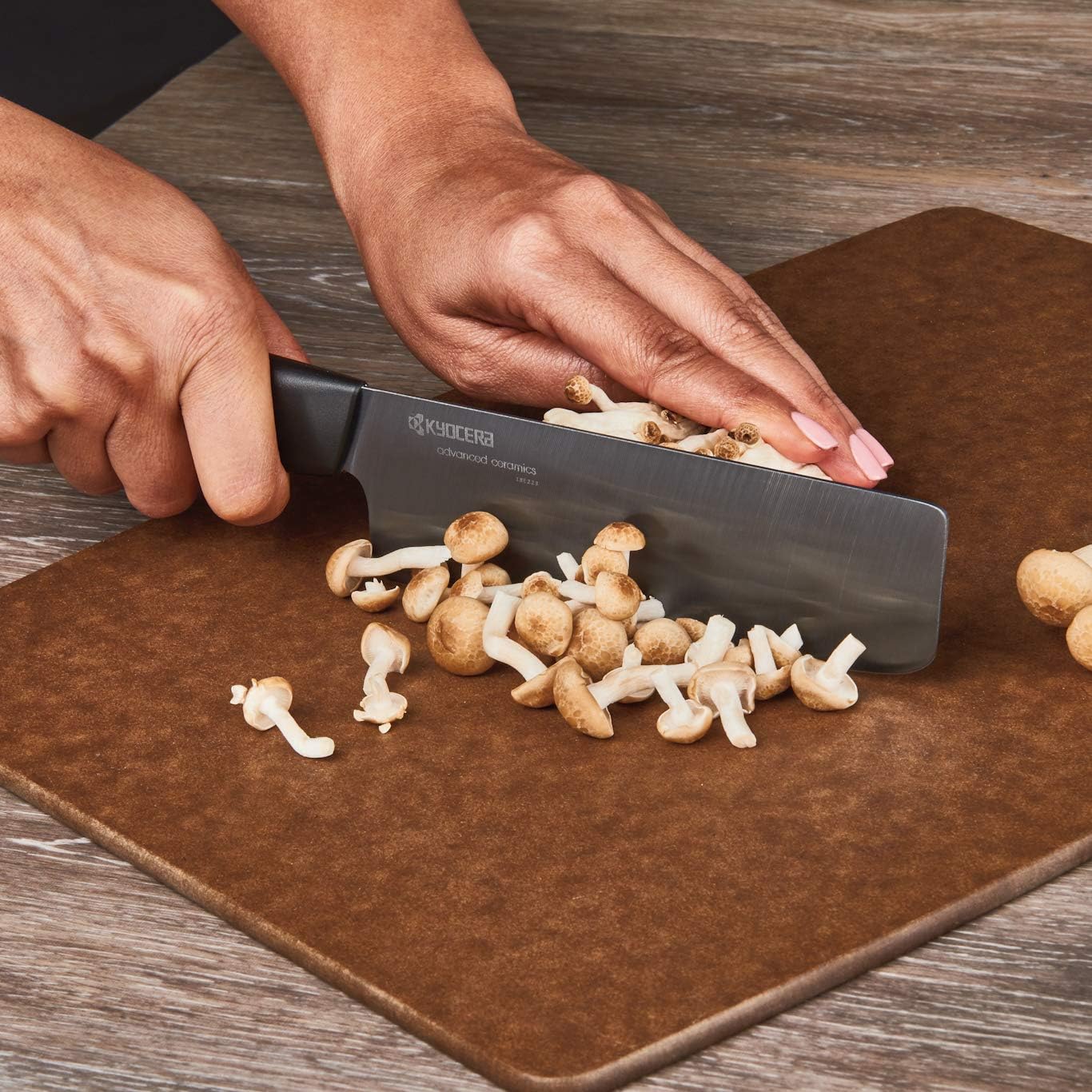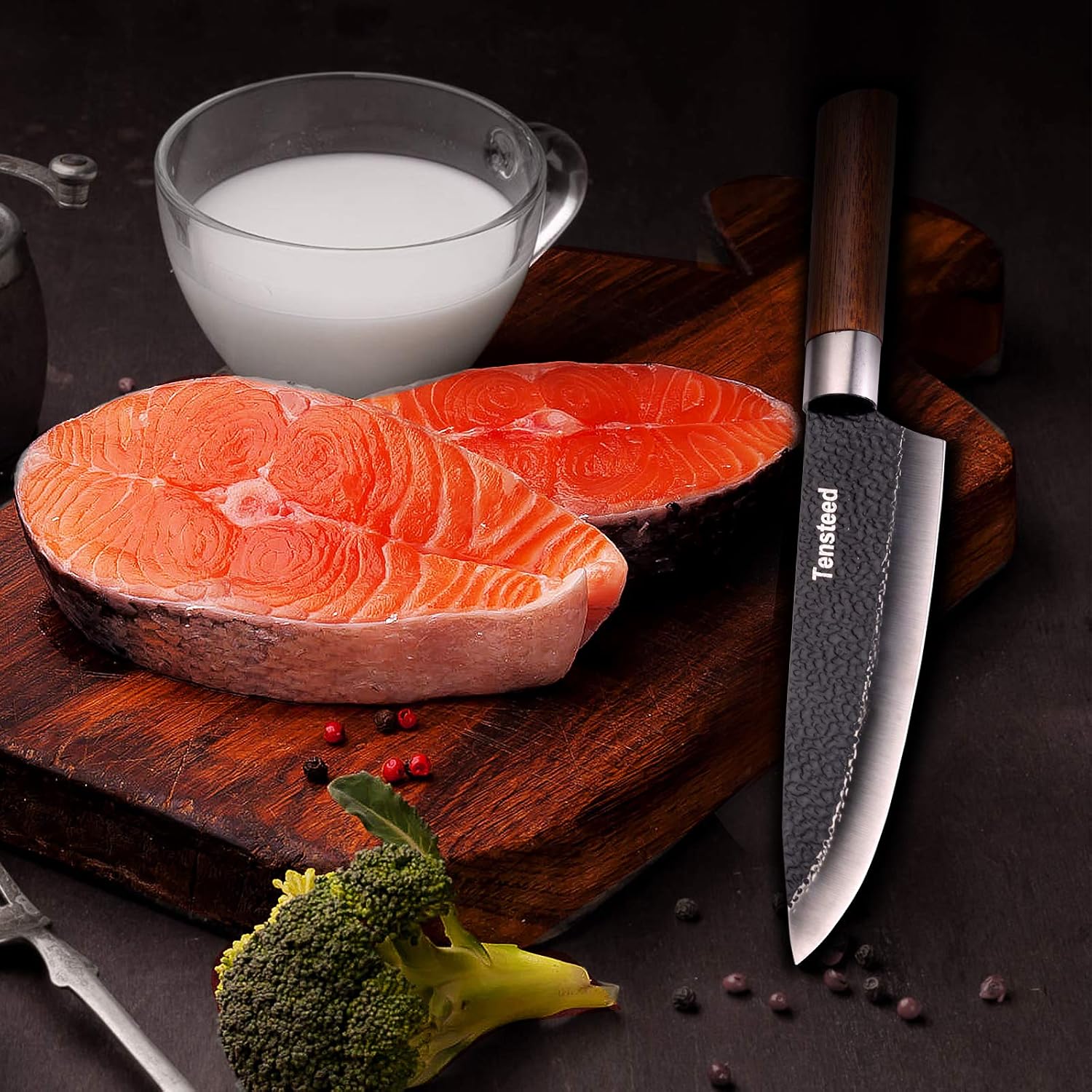Ceramic Vs Steel Knives | Pros and Cons [2022]
Ceramic Vs Steel Knives | Pros and Cons [2022]
The hunt for superior quality knives can prove difficult because there are numerous brands on the market, parading themselves as impeccable when they are of low quality.
The question is, what the difference between a steel knife and a ceramic knife is? And which one is better? Let’s find out the winner from the Ceramic vs Steel knives face-off.
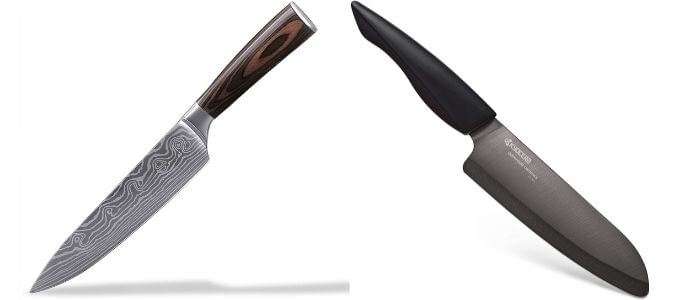
Ceramic vs Steel Knives: Which One is Better?
However, you need to know that both Ceramic and steel knives have their pros and cons. While deciding which knife to get, you’ll need to consider both factors (pros and cons).
That way, you’ll end up with a blade that will serve you long-term. Without further delay, let’s explore.
What is a Ceramic Knife?
The description is relatively straightforward; It’s a ceramic knife because the blade is made of ceramic! Artisans construct the ceramic blades using Zirconium Oxide, also known as Zirconia.
Artisans often use Zirconium Oxide Powder by firing and dry pressing methods to make ceramic blades.
Furthermore, during this process, artisans use a technique known as solid-state sintering.
Without a doubt, A ceramic knife is considerably harder than a metal knife. These knives are so hard that artisans need to use blades covered with diamond dust while grinding them.
Also, the hardness of Zirconium Oxide averages 8.5, and that of diamonds and hard steel falls is 10 and 4 consecutively. Therefore, proving the point that Ceramic knives are harder than steel.
Besides, ceramic kitchen knives can resist caustic substances and acids, making them an excellent choice for cutting vegetables, bread, fruits, and meat.
This blade is a perfect cutting option for those who like to chop and dice in their kitchen a lot. Also, these knives are lightweight and have very little pores.
Regardless, these knives can’t cut or slice a variety of foods. These are bones, frozen foods, or anything hard because it can lead to chipping.
You need to know that even though Ceramic knives are harder than steel knives, they are fragile. For instance, ceramic blades may break once you drop them on a rigid surface.
It’s also not safe to keep a Ceramic knife in the dishwasher or the drawer because it may crack or broken by clashing with other utensils.
What is Steel Knife?
A steel knife is simply a knife that has a steel blade. There are many steel knives available in the market.
Also, producing blades differs—for instance, high-speed steel, carbon steel, sharp edge, stainless steel, and more.
Nonetheless, these materials have some similar aspects. These aspects include; edge retention, hardness, toughness, and wear resistance. Therefore, steel is an excellent material for kitchen knives.
Before choosing a steel blade, you need to weigh your needs. The most suitable blade for you needs to adhere to your needs. That way, you’ll end up with a steel knife that suits you.
Perhaps you’re asking yourself, “what is the best steel for knives?” Well, the best steel for knives differs from person to person. Just because steel has the characteristics we listed above doesn’t mean it will work well with you.
You must understand your needs and compare them to steel features. That’s the perfect way you’ll know about the best steel for knives.
Furthermore, some factors depend on the environment and your level of maintenance.
Suppose a knife is rust-resistant; if you don’t take care of it, it may end up rusting more or less, depending on the type of steel.
Ceramic vs Stainless Steel Knives: Differences
The Materials
The primary difference between ceramic and steel knives is the blade material.
A Ceramic knife blade is constructed from a material known as Zirconia or Zirconium oxide.
On the flip side, Steel knives are made from steel.
You need to know that artisans use different types of steel to construct steel knives. However, Ceramic blades are made from Zirconia, and there aren’t any different genres of the component.
The Hardness
As we mentioned earlier, Zirconium Oxide, also known as Zirconia, is used in making Ceramic knives. The hardness scale of this component averages 8.2 Mohs. The hardness scale of steel is 4.0 Mohs.
Furthermore, since ceramic is one of the hardest materials, artisans use diamond dust to grind the blade. The hardness scale of Diamonds is 10 Mohs. Arguably, ceramic is harder than steel.
The Toughness
Most people often believe the knife’s hardness and toughness are similar, but that’s not the case. On the contrary, if a knife has high toughness, it merely means that it’s very durable and unbreakable.
A knife with a larger hardness scale is bound to break once it falls on a hard surface. That is why ceramic knives aren’t suitable for cutting hard foods.
However, metal blades excel at cutting hard foods.
Sharpness
Ceramic knives are often designed with extremely sharp blades that effortlessly slice through vegetables, boneless meat, fruits, and even cheese. This type of knife is a fantastic choice for slicing veggies or cutting sticky cheese.
However, as we mentioned earlier, Ceramic knives aren’t appropriate for cutting hard foods.
Furthermore, metal knives lose the sharp edge after a while, so they are often sharpened.
Unlike steel knives, ceramic knives don’t lose Its razor-sharp edge and sharpness will last 10-times longer than steel knives.
The Longevity of their Edges
Which knife is durable, steel or ceramic?
The answer is quite simple; steel knives are more durable than ceramic knives; this drives us back to the knives’ hardness level.
As we previously explained, Ceramic knives are harder compared to steel knives. Therefore, once these knives fall on hard surfaces, they end up chipping or breaking.
Ceramic knives are not Shatterproof. On the flip side, stainless steel knives are, making them tougher than Ceramic knives.
Lastly, Steel knives have a rust-resistance feature that makes them last longer than Ceramic knives.
Are ceramic knives better than steel knives?
There is no straightforward answer because it depends on your personal needs. Regardless, as per our comprehensive research, we’ll list which of the two is more suitable.
First, ceramic knives are relatively fast and Sharp, making them ideal for cutting vegetables, boneless meat, and fruits.
If you were planning on purchasing a ceramic knife for hard foods such as frozen food and bones, then we strongly advise you against it.
Furthermore, ceramic knives seem easy to use at first since they are lightweight. Its proprietary grinding process gives a finger-friendly cutting edge and makes it an asset for amateur home chefs.
Ceramic knives avoid transferring ions from the blade surface, which lower the oxidation in sliced fruits.
However, once you get used to them, you’ll realize that your shoulders do the most work. Ceramic is a brittle material which is a negative impact when it comes to durability.
These knives aren’t suitable for professional Chefs.
On the other hand, if you are looking for an excellent chef knife with a significant edge geometry, steel knives are a fantastic cutting option.
Also, the best Japanese knives for chefs are often constructed from steel. If you are looking for a knife that will last longer, a steel knife is ideal. And you will find a variety of steel knives according to your budget.
Japanese knives with pakkawood handles are the best to avail if you don’t have budget problem.
How to remove rust from stainless steel knives?
If you are looking for effective ways to remove rust from stainless steel blades, we have a solution.
All you have to do is pour over the knife’s rusty side in a bowl of vinegar. Let the knife stay in the bowl overnight. Once the metal blade has had a good soak, scrub it with a wire brush or steel wool and rinse with water.
If you notice that there are remaining spots, soak the knife once again and repeat the procedure.
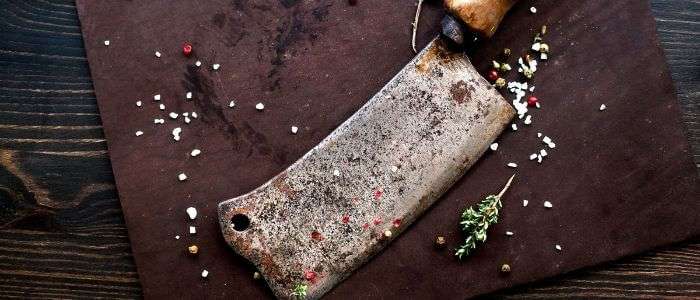
How to sharpen ceramic knives at home
Well, you probably want to know how to sharpen ceramic knives at home. Here’s how;
Since Ceramic knives are very sharp, the only way you can sharpen these knives is by using Diamond sharpeners. Undoubtedly, sharpening ceramic knives seems much more complicated than sharpening steel knives.
Get a storage block to store your ceramic knives to avoid breaking and protecting the blade edges.
https://www.youtube.com/watch?v=IDoWZ2-2yVk
Final Words
We have provided an extensive comparison between ceramic vs steel knives to help you choose between the two.
We highly recommend buying a Steel knife, specifically Japanese knives, if you want to cut hard foods or if you need a durable knife.
On the flip side, it’s only right to purchase a ceramic knife if you’re looking for a knife that’s sharp enough to cut through vegetables, boneless meat, and fruits.
Share this Post to Inspire Us
Share on facebook
Share on twitter
Share on pinterest

